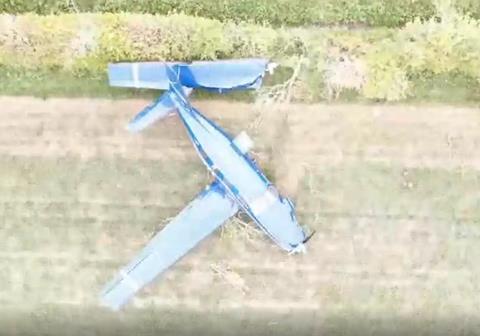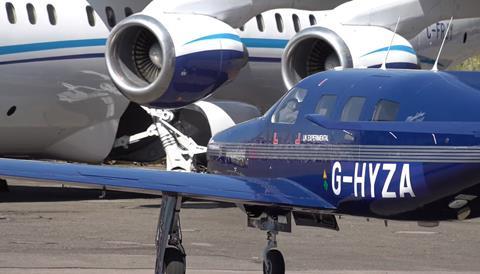Low-emission aviation firm ZeroAvia is investigating the circumstances of an accident which badly damaged its test aircraft.
The aircraft, a Piper M350, has been retrofitted with a hydrogen-electric propulsion unit and conducted its first hydrogen fuel-cell-powered flight in September last year.
ZeroAvia says it made an “safe, off-airport landing” in a field outside of the UK’s Cranfield airport on 29 April, acknowledging that it “sustained some damage”.
But fire service images from the scene show the aircraft (G-HYZA) has been extensively damaged, suffering complete separation of its left wing, impacts to the left-side fuselage and stabiliser. It came to rest listing on its fuselage underside.

No-one was injured in the accident, says the company. “We will provide updates as we learn more,” it adds.
ZeroAvia has not indicated whether the experimental powerplant and related systems were linked to the accident.
It had recently reconfigured the six-seat aircraft – which it has designated HyFlyer-1 – with longer-range tanks, for the final stage of flight tests which commenced on 23 April.
The aircraft had previously been used, in June last year, to carry out electric flights under battery power.
ZeroAvia’s hydrogen fuel research has been backed by partners including British Airways, which has entered into a collaboration with the developers through the ‘Hangar 51’ accelerator programme overseen by British Airways parent IAG.



























